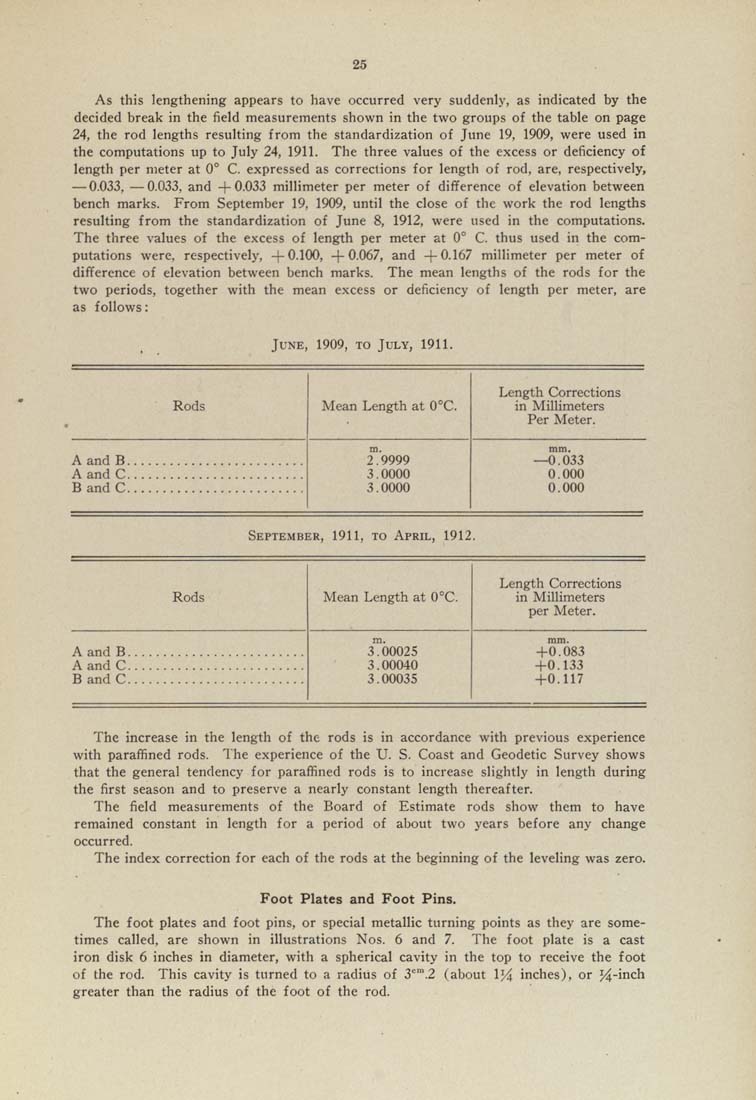As this lengthening appears to have occurred very suddenly, as indicated by the
decided break in the field measurements shown in the two groups of the table on page
24, the rod lengths resulting from the standardization of June 19. 1909, were used in
the computations up to July 24, 1911, The three values of the excess or deficiency of
length per meter at 0° C. expressed as corrections for length of rod, are, respectively,
— 0,033, —0.033, and -|-0,033 millimeter per meter of difference of elevation between
bench marks. From September 19, 1909, until the close of the work the rod lengths
resulting from the standardization of June 8, 1912, were used in the computations.
The three values of the excess of length per meter at 0° C. thus used in the com¬
putations were, respectively, -|-0,100, -(-0.067, and -|-0.167 millimeter per meter of
difference of elevation between bench marks. The mean lengths of the rods for the
two periods, together with the mean excess or deficiency of length per meter, are
as follows:
June, 1909, to July, 1911.
Rods
Mean Length at O^C.
Length Corrections
in Millimeters
Per Meter.
2.9999
3,0000
3,0000
0.000
September, 1911, to April, 1912.
Rods
Mean Length at 0°C,
Length Corrections
in Millimeters
per Meter.
3'"00025
3.00040
3,00035
-1-0,117
The increase in the length of the rods is in accordance with previous experience
with paraffined rods. The experience of the U. S, Coast and Geodetic Survey shows
that the general tendency for paraffined rods is to increase slightly in length during
the first season and to preserve a nearly constant length thereafter.
The field measurements of the Board of Estimate rods show them to have
remained constant in length for a period of about two years before any change
occurred.
The index correction for each of the rods at the beginning of the leveling was zero.
Foot Plates and Foot Pins.
The foot plates and foot pins, or special metallic turning points as they are some¬
times called, are shown in illustrations Nos, 6 and 7. The foot plate is a cast
iron disk 6 inches in diameter, with a spherical cavity in the top to receive the foot
of the rod. This cavity is turned to a radius of 3'^'".2 (about 1J4 inches), or J4"i"*^
greater than the radius of the foot of the rod.
|








